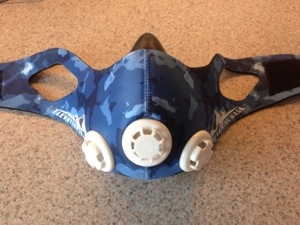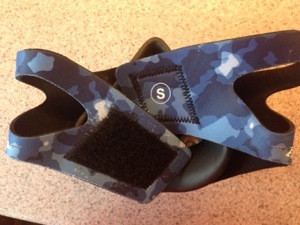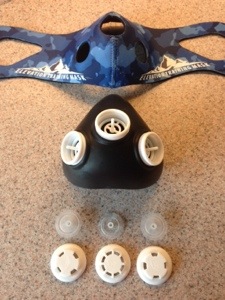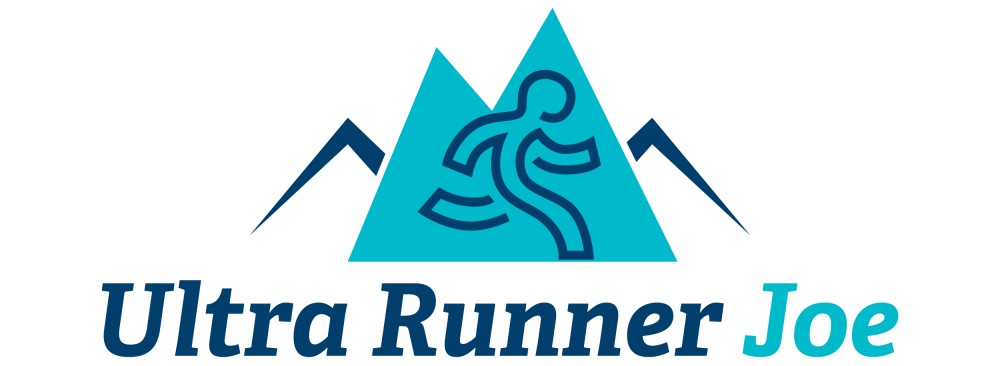Gear Review: Training Mask Elevation Training Mask 2.0
Disclaimer: This is actually my first ever written gear review. I will try to cover everything, but would love your feedback on how I did so that I can create better reviews for other products in the future.
For my first gear review on the site, I wanted to cover a product that I have not seen much coverage on, at least in the world of mountain running.


The Elevation Training Mask 2.0 from Training Mask (based out of Cadillac, MI which, coincidentally, is the birthplace of yours truly) is a very popular training tool in the world of MMA. More recently, you may have even heard about football teams using them to prepare for games being played at high altitudes. Despite adoption in other sports, I haven’t really heard of many people using them in mountain training. Now you might be thinking, “you live in Salt Lake City, why do you need an altitude training mask?” Well, while I do love mountain running, I am not much of a winter sport guy. Yes, I dabble in snowshoeing, but that is about the extent of it and only occasionally at best. As a result, I don’t get a lot of high elevation mountain time in during the winter to prepare me for the racing season. So, as someone that likes to experiment with gear and needed a solution, I decided to order one and put it to the test.
In the Box
Price: $79.99 (https://www.trainingmask.com/products/TRAINING-MASK-2.0.html)

In the box, you receive a number of components:
- The training mask
- Neoprene sleeve with velcro fastener (you can purchase additional sleeves with different designs so that you can swap them out for frequent cleaning or for making a trendy fashion statement)
- 3 valves
- 9 valve covers (not all pictured)
- Instruction manual (includes suggested usage, details on adjusting for different altitude variations, and some basic exercises)
The Basic Concept
The mask “simulates” high altitude through the pretty simple concept of restricted airflow. Obviously, at high altitude, less oxygen is reaching the lungs per breath. The same holds true (at least that is the claim) with restricted airflow. In other words, with each full breath, you are getting less air/oxygen with the mask then you would under normal conditions.
The mask uses (3) valves, each of which can be independently configured, to allow varying degrees of air flow to the mouth. This allows the user to simulate anywhere from a 3,000 – 18,000 ft. altitude adjustment.
The “Science”
The higher you are, the less dense the oxygen is in the air. So, with each full breathe you take, you are getting less oxygen. This mask isn’t going to do that. Instead, it creates a restricted air flow scenario, where it becomes harder to breathe. So this mask isn’t ACTUALLY simulating altitude, but I do believe it has some other benefits.
My Thoughts
Pros:
- It seems to be beneficial. During workouts, whether running or cross-training, the workouts seem more taxing and produce a similar feeling to high levels of exertion at altitude. I have been using it as part of my winter training all season and have already shown that despite being only March, I am running faster with less effort than in previous seasons. This could be a result of a number of factors of course, but outside of using the mask, I have changed very little to my winter training approach.
- As a side benefit (and maybe the most beneficial for me), my breathing pattern has become much more consistent. While wearing the mask, it is difficult to take quick, short breaths. As a result, I have found that the mask forces me into the habit of taking consistent, long, deep breaths.
Cons:
- The neoprene masks are stretchy in nature and connect in the back of your head using Velcro. I started with a size Medium and because of this, it bounced just enough on my face to be annoying. I ordered a size Small and the issue when away. Lesson learned, order a size smaller than you think you wear. The sizing only applies to the neoprene sleeve and not the mask itself.
- I often maintain a beard in the winter months. I found that if I let it get too long, it impacted the seal between the mask and my face. It was only an issue if I didn’t keep my beard trimmed, which I normally do.
- Be careful using it outside while it is dark…you could scare other people that you pass 🙂
Recommendations:
Highly Recommend
Not everyone can afford to shell out the cash to buy an altitude tent or some other high-tech altitude training equipment. I found this to be a great alternative. My personal experience and early season performance gives me a high level of confidence that it works as a cost effective training tool. Even if it does not directly translate to pure altitude training, it has made my workouts more challenging and productive, which has helped to improve my overall fitness and technique. It has become a frequent partner in my workouts (I usually use it 1-2 times a week) and I intend on sticking with it well into the future.
